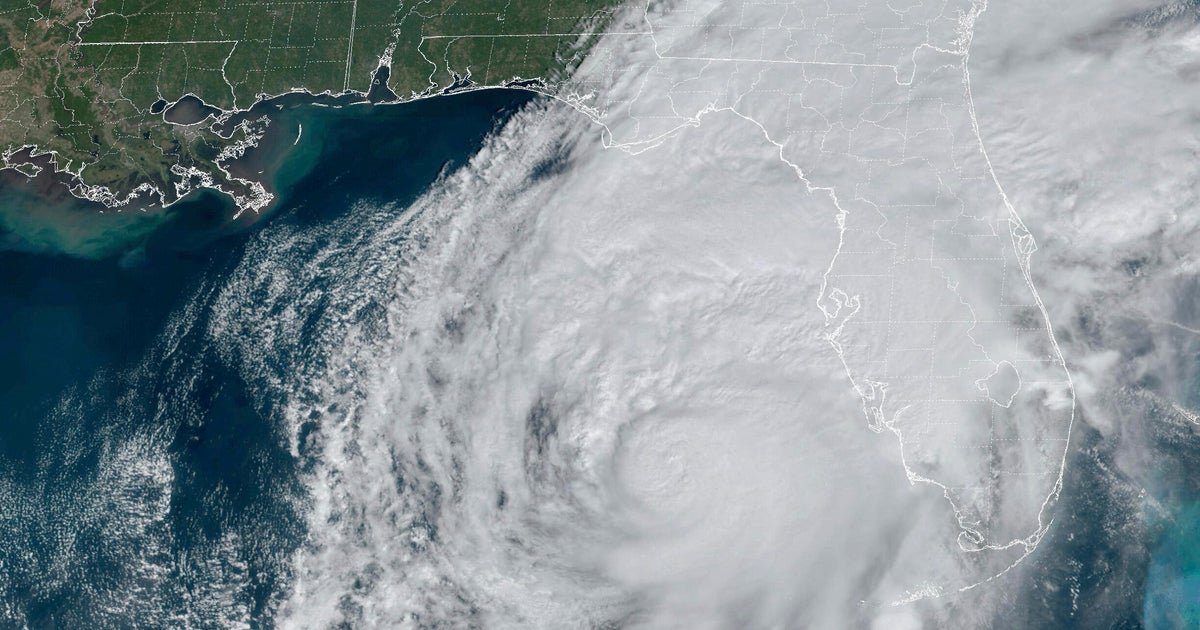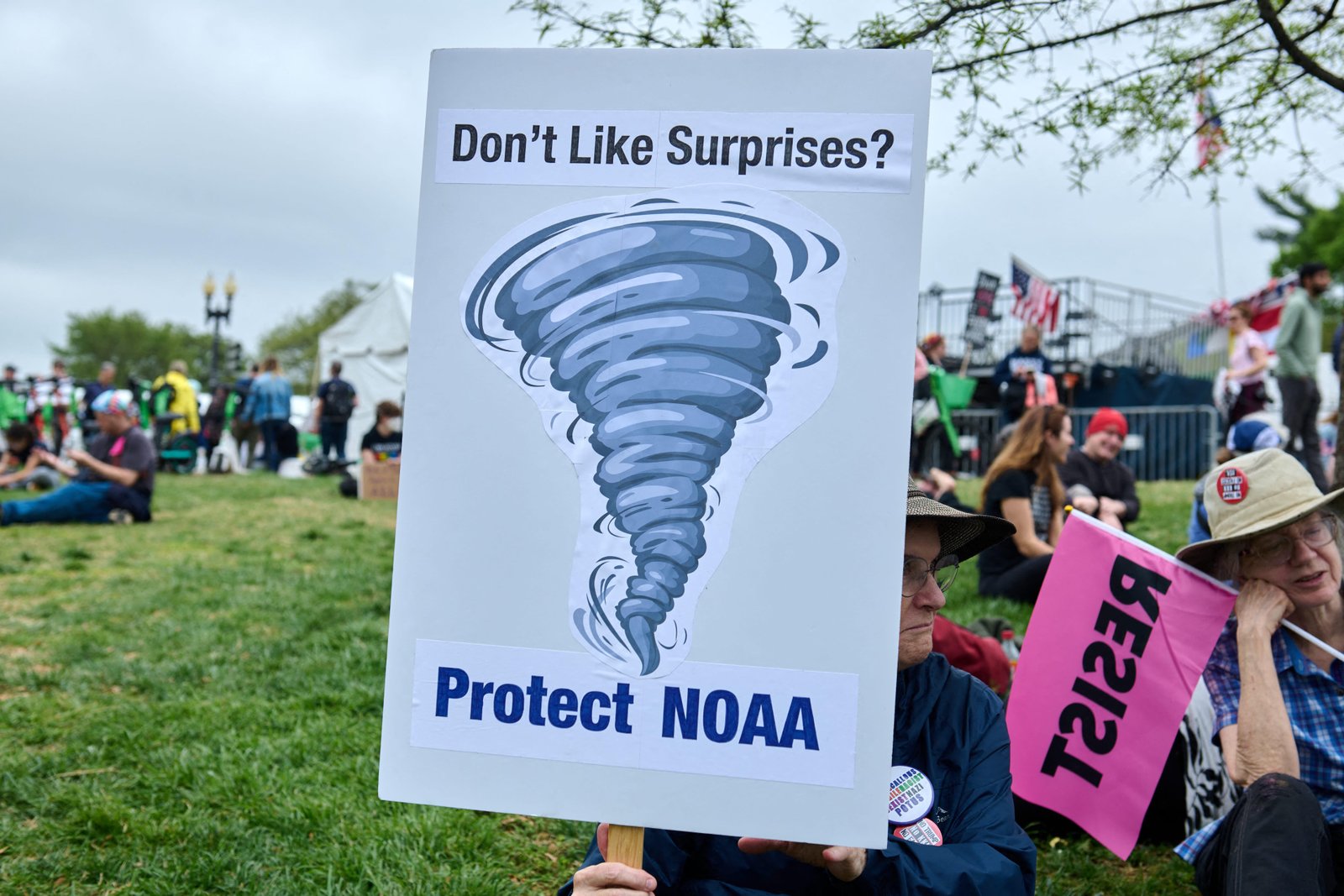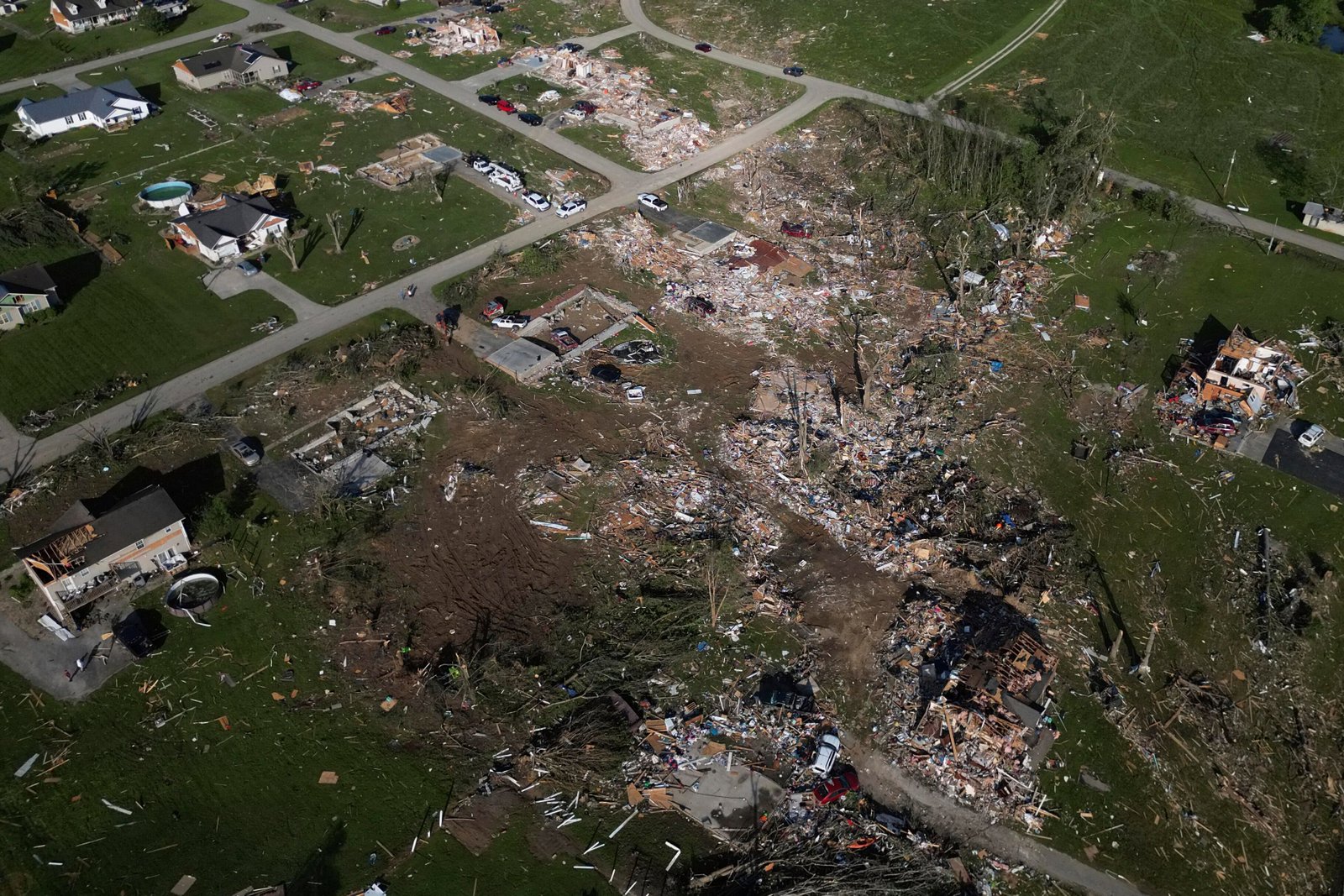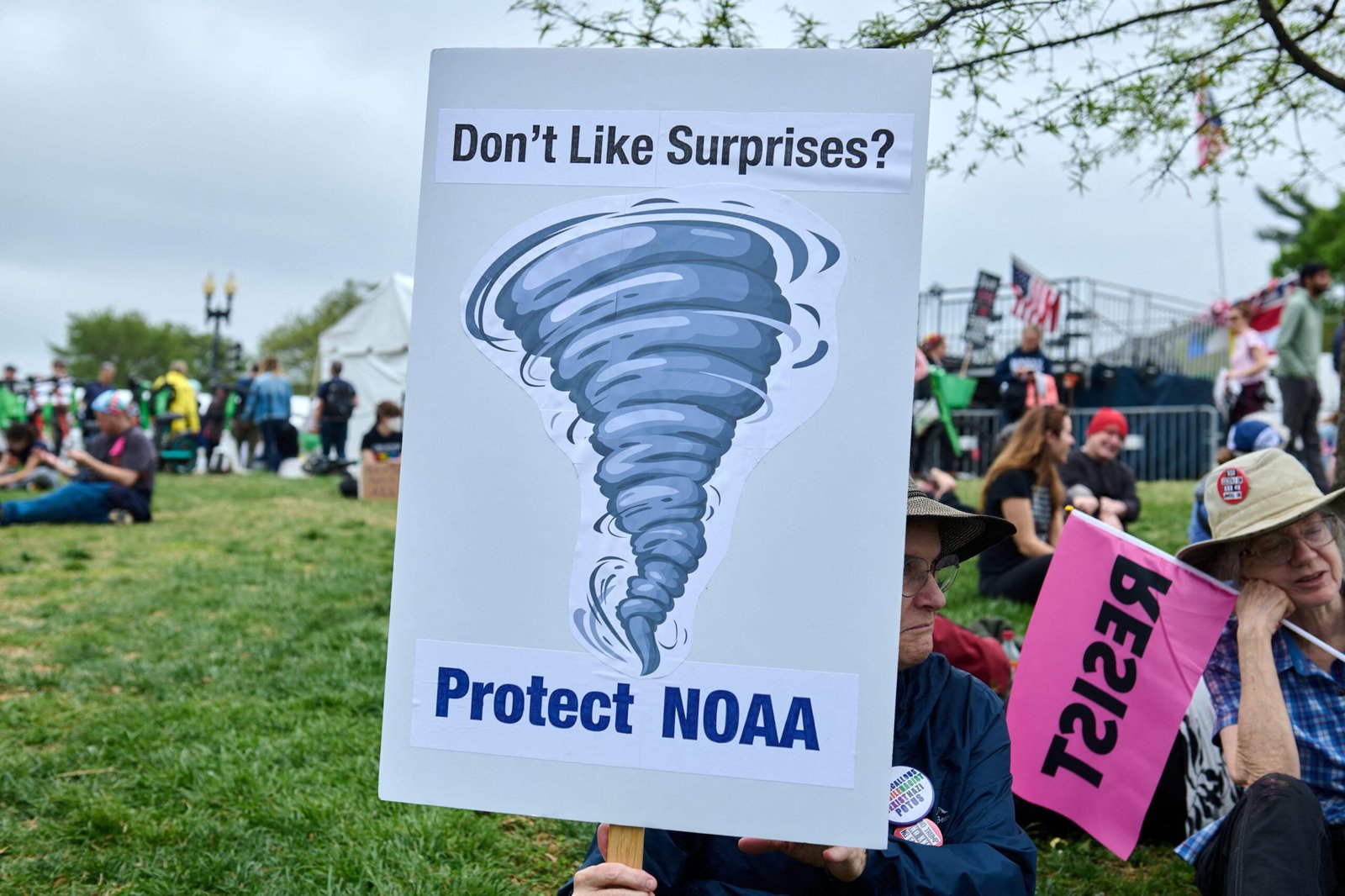
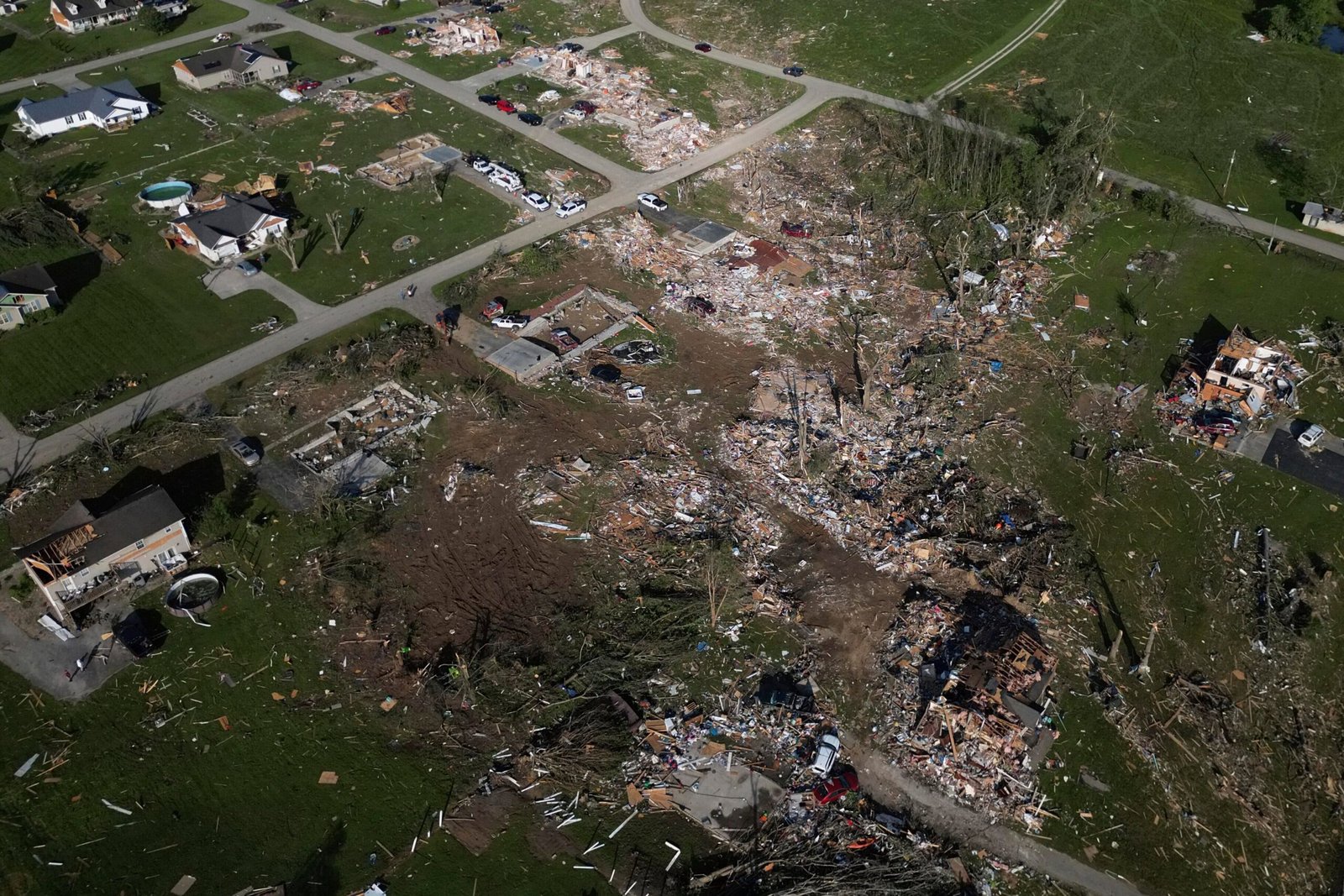
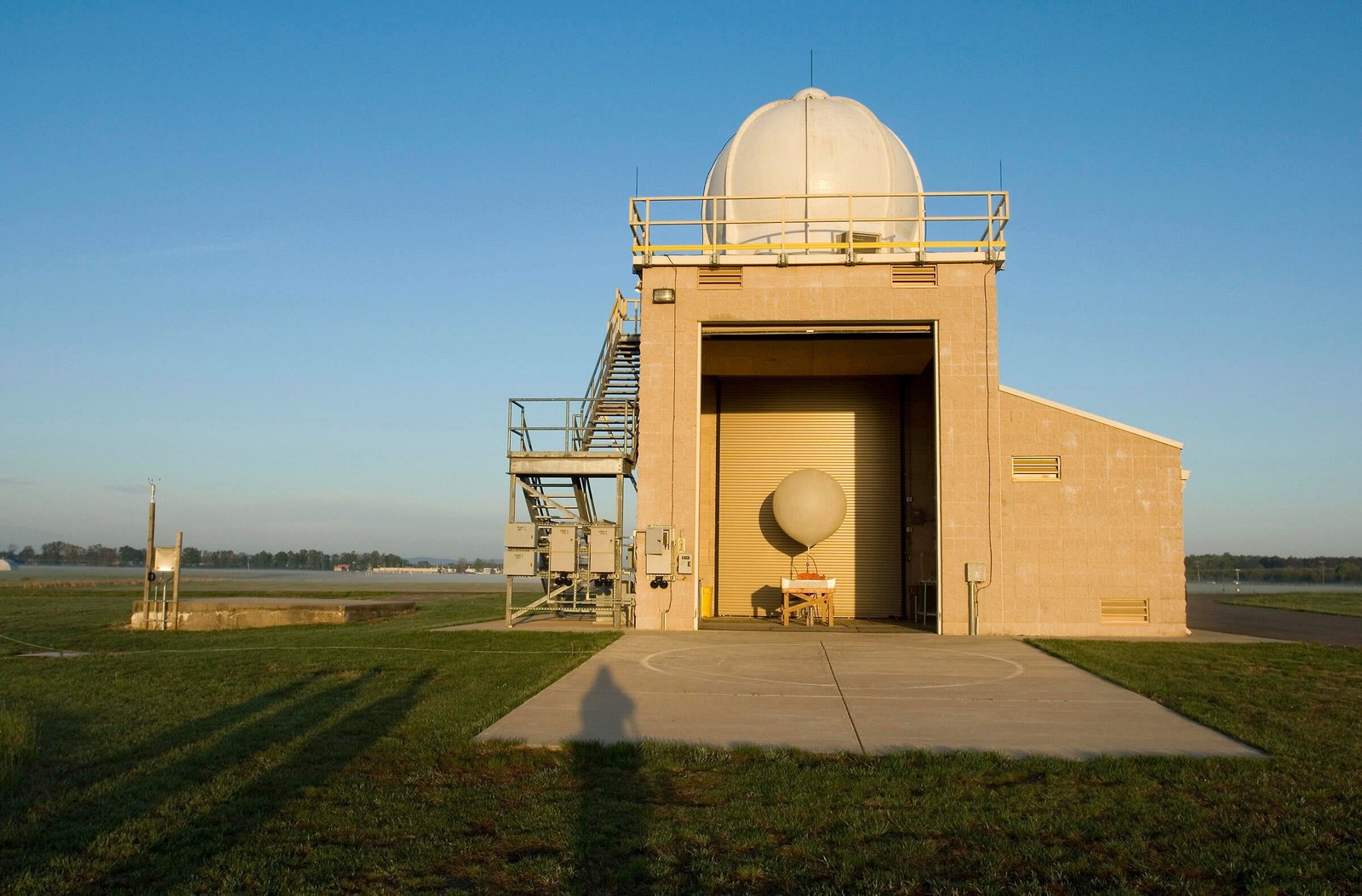
On the brink of the Atlantic hurricane season, a pared-down National Weather Service is scrambling to deal with the realities of severe staffing gaps at the agency in charge of preparing the public for natural disasters in every part of the country.
Concerned meteorologists warn that the forecasts communities have come to depend on as their front line of defense against hurricanes could suffer this year, as the Weather Service remains chiefly responsible for predicting storms despite recently losing at least 10% of its workforce.
The cuts stemmed from President Trump’s initiative to reduce government spending when he retook office, in part by slashing federal jobs.
Through a combination of mass firings and buyouts since January, about 1,000 workers have left the National Oceanic and Atmospheric Administration, the Weather Service’s parent agency and the nucleus of weather and climate information in the United States, multiple current and former employees told CBS News. Roughly 550 of those departures came out of the Weather Service, including its National Hurricane Center, which is the division focused on tropical storms, and numerous local forecast offices that monitor weather for their regions.
Atlantic hurricane seasons run annually from June 1 to Nov. 30, and this next one is slated to be more active than an average year, according to NOAA forecasters. Their latest hurricane outlook predicted an “above-normal” hurricane season in 2025, likely producing between 13 and 19 named storms. Six to 10 of them are expected to become hurricanes, and three to five could be major, as in Category 3 or above.
“Uncharted territory”
Groups of lawmakers, forecasters and retired agency leaders have all spoken out about potentially catastrophic consequences ahead if the agency enters its busiest period without enough employees to reasonably handle the load. In an open letter released earlier this month, four former Weather Service directors pleaded with the Trump administration to replenish resources at the agency or risk “needless loss of life.”
Bill Read, a retired Weather Service meteorologist and the director of the Hurricane Center from 2008 until 2012, told CBS News he believes the agency is committed to its mission to safeguard life and property and “will do whatever it takes to get the job done,” even if that means employees take on additional work to make up for vacancies this summer and fall. But Read also said he never witnessed staff shortages during his tenure that could compare to those affecting the agency now.
“It’s uncharted territory,” Read said. “They have a very difficult task, the folks that are still working there, trying to maintain the level of service that they’ve gotten used to giving, and that the public has gotten used to getting.”
In a statement emailed to CBS News, a Weather Service spokesperson said the agency “has updated the service level standards for its weather service forecast offices to manage impacts due to shifting personnel resources” and “continues to ensure a continuity of service for mission-critical functions.”
“The National Weather Service continues to meet its core mission of providing life-saving forecasts, warnings, and decision support services to the public, our partners and stakeholders,” the spokesperson said. “These revised standards reflect the transformation and prioritization of mission-essential operations, while supporting the balance of the operational workload for its workforce.”
Limited hours
The Weather Service already faced declining employment in the years leading up to the Trump administration’s firing spree. In its aftermath, regional forecast offices in at least six different cities are critically understaffed, according to multiple people interviewed for this story.
Tom Fahy, the legislative director of the union representing Weather Service employees, told CBS News those offices are located in Jackson, Kentucky, where a devastating tornado two weeks ago killed at least 19 people and left hundreds homeless in that state alone; Goodland, Kansas; Cheyenne, Wyoming; Hanford, California; Sacramento, California; and, starting June 1, Fairbanks, Alaska.
While they are not the primary targets of tropical storms, eastern Kentucky was hit hard by the powerful remnants of Hurricane Helene last September and each region on that list is vulnerable to other kinds of disastrous weather that tend to spike around this time of year. Aiming to address their resource deficits as Mr. Trump blocks federal hiring, a process is underway at the Weather Service to transfer staff from less desolate offices into critically understaffed ones, which strains the entire system, said Brian LaMarre, a former Weather Service meteorologist who accepted an early retirement offer this year after three decades with the agency.
Staffing levels are considered critical at a forecast office when it employs seven or fewer “operational” meteorologists, meaning those who handle daily forecasting duties, LaMarre said. When fully staffed, a forecast office typically assigns rotating shifts to 12 or 15 operational workers in order to cover a complete 24-hour schedule. But at locations now facing critical shortages, staffing overnight shifts on a routine basis is no longer possible.
Curtailing a local office’s hours could prevent urgent messages about an incoming storm from the Weather Service’s national headquarters to regional forecasters whose jurisdictions are directly affected. That could be especially dangerous if a storm develops unexpectedly, said a Weather Service meteorologist who is still employed by the agency and asked to speak on the condition of anonymity to avoid possible retaliation.
“The Hurricane Center sends out the large-scale forecast, the big picture, and then it’s up to the weather forecast offices to tailor to their local areas,” the meteorologist said. “How in the world will we know who to talk to when these offices are closed in the middle of the night? If there’s enough warning, I suspect someone will be there, but sometimes hurricanes are a surprise, especially the weaker tropical storms.”
Widespread vacancies
At least 36 of the nation’s 122 forecast offices are missing specialists in key roles, even if their capacities have not technically met the criteria to be labeled critically low, according to internal job postings sent out to Weather Service staff in May and reviewed by CBS News.
Several of them are in hurricane-prone areas along the Gulf Coast, including Lake Charles, Louisiana; Mobile, Alabama; and Miami. They are bracing for the tropical storm season with just eight operational positions currently staffed, said Fahy. He told CBS News that Houston and Key West are doing the same with nine.
Forecast offices in Houston and Lake Charles are among many without a meteorologist-in-charge, according to current and former Weather Service meteorologists and the job postings. That role is the most senior of three supervising meteorologists normally assigned to a given forecast office, who also functions as the director of that location. Another is the Tampa Bay office, which is also on the Gulf and frequently contends with hurricanes.
LaMarre was the meteorologist-in-charge in Tampa Bay before retiring and said he feels confident the two meteorologists who worked under him will be able to fill his now-vacant previous role in an acting capacity.
But, at the Houston/Galveston office, which was a notably crucial source of information during Hurricane Harvey in 2017, the top three meteorologist positions are vacant along with a fourth chief analyst who maintains the office’s electrical systems, according to its staff roster as of May 30. In addition to its meteorologist-in-charge, the office is also lacking a warning coordination meteorologist, who works with emergency managers to share severe weather warnings with the community, and its science and information officer, who verifies the scientific and technological integrity of an office’s forecasts.
“We can’t possibly talk to every emergency manager across the U.S. That’s where the relationships between warning coordination meteorologists and emergency managers come in,” said the meteorologist who asked not to be named. “Those relationships are degraded or non-existent with the loss of staffers.”
Less weather data
The Weather Service announced in the wake of the spring’s federal firings that it would suspend or restrict weather balloon launches at 11 forecast offices across the country due to lack of adequate staffing — a move that effectively scaled back one of the most reliable methods used to track weather patterns in real-time.
Weather balloons traditionally have been launched twice daily, at 8 a.m. and 8 p.m. EST, from 100 forecast offices around the country. They carry electronic measuring devices into the atmosphere that collect data and transmit it directly into a computer modeling system that the Weather Service uses to predict storms, often laying the foundation for local forecasts. During an evolving weather emergency, like a hurricane, the balloons help meteorologists anticipate the path of the storm.
Meteorologists are also concerned about additional funding cuts down the line. A White House budget proposal for 2026 suggests reducing NOAA’s allocation by about $1.5 billion, which would shrink the agency by 30%. The plan targets programming around weather research, oceanic observations and satellites, areas the proposal’s critics say are essential for accurate storm forecasts.
“That research is what helps the Weather Service save lives in the future,” said LaMarre. “If we sever research and operations, it’s hard to improve with new technology and new techniques.”
An extended hiring freeze
The Trump administration’s federal hiring freeze prevents the Weather Service from recruiting new candidates to fill open positions until at least mid-July. Instead, the agency is trying to reshuffle its workforce and move employees from larger offices to critically understaffed locations in hopes of balancing the scales.
The internal job postings distributed earlier this month sought immediate applications for 155 operational roles, including 76 meteorologist positions, at shorthanded locations. The openings appeared in a document titled “Notice for Non-Competitive Reassignment,” which asked eligible candidates to apply by May 27.
Redistributing labor likely will not prove to be a sustainable solution, especially if small offices contend with repeated tropical storms in the coming months, said Alan Sealls, a retired broadcast meteorologist recognized for his work around hurricanes and the rising president of the American Meteorological Society. Sealls told CBS News he tries to be optimistic about the agency’s ability to fulfill its mission throughout hurricane season, but, given the circumstances, burnout may eventually be unavoidable.
“I know a lot of weather service employees, and they are dedicated to doing what they need to do. However, I know that when you have cuts and layoffs, it means everyone who’s left is working harder with fewer people resources, and that opens you up to fatigue. It opens you up to the possibility of small errors and oversights,” Sealls said. “If we have a season where it’s nonstop storm activity, everybody’s going to be stretched to the limit. You can move people, but you still are going to run short on your resources.”
House Democrats on the Science, Space and Technology Committee have called on the White House Office of Management and Budget Director Russell Voight to exempt the Weather Service from Mr. Trump’s hiring freeze, arguing its responsibilities are critical for public safety. Rep. Zoe Lofgren, a Democrat from California and ranking member of her party on the committee, told CBS News they have yet to receive a substantive response to any of their requests.
“There’s been a lot of chaos and illegal firings, coercions to resign, really, an obsession with destroying the morale of the employees at the Weather Service, and why we would do this so that we cannot get the public prepared for disaster is something that is mysterious indeed,” Lofgren said. “The Democrats are in the minority. We lack the power to compel answers, but I think it’s pretty pathetic that the administration is hiding what they’re doing and leaving Americans unprepared and at risk.”
CBS News contacted the Department of Commerce for comment but has not received a reply.
[ad_2]
